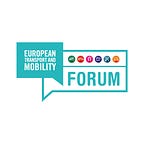Challenges and risks hidden in the future transport scenarios
By Mrs. Eleni Chalkia, CERTH/ HIT, Athens (Greece)
The Failure Modes, Effects and Criticality Analysis (FMEA) methodology is used to identify the risks relevant to the Mobility4EU solutions, challenges and barriers. These challenges and barriers have been identified by a group of experts representing all stakeholders sourced from project Consortium and the project’s associated partners.
The solutions coming out of the rankings from the MAMCA and the results from the extended FMEA methodology will be taken into a creative process of vision building that will be undertaken together with stakeholders from all fields of transport. This will lead to the Vision for Transport in Europe in 2030, which will concentrate on interactions, combinations and interfaces between prioritized solutions. Finally, an Action Plan to implement that vision will be drafted and put into a broad stakeholder consultation.
The extended FMEA methodology is based on the classical FMEA methodology, which includes the indicators of hazard consequence severity, occurrence probability, detectability and recoverability, and extends it, covering not only technical risk, as done in classical FMEA methodology, but including also behavioural, legal and organisational-related ones.
For each selected Mobility4EU solution, risks are first identified and the level of risk is assessed by considering the number of characteristics for each risk type (technical, behavioural, legal and organisational). The significance of a risk, overall, depends both on its consequences and the probability of its occurrence, but also on how easily the developing risk can be detected.
In general, a risk assessment consists of analysis of risks (i.e. the identification of potential hazards and some estimation of their magnitude) and an evaluation of the tolerability of that risk in its anticipated context. The steps that follow for the calculation of the risk within the extended FMEA methodology as applied in Mobility4EU project are depicted in the figure below. These are similar to the process within the original FMEA.
In Mobility4EU risk analysis, 169 challenges were identified in total, for the solutions that we have defined to be implemented in the Mobility4EU scenarios by 2030, for all related modes and clusters.
· All modes: 12 challenges
· Air: 12 challenges
· Freight: 9 challenges
· Rail: 13 challenges
· Road: 47 challenges
· Urban:18 challenges
· Waterborne: 58 challenges
From these 169 challenges, 49 were defined as legal, 49 as organizational, 47 as technical and 24 behavioural. As depicted in the following chart, we can see that the risks are homogeneously scattered between the different types proposed in the methodology.
From these 169 challenges identified by the Consortium experts, none was ranked as insignificant, 17 as slightly significant, 72 as moderately significant, 70 as severe and 10 as extremely severe. Mitigation strategies were provided from the experts for all extremely severe risks.
If no extremely severe risks were identified for a cluster of solutions, then mitigation strategies were provided for the severe risks of that category. So, mitigation strategies for 49 risks were defined. These mitigation strategies will be taken into account together with the MAMCA results at the Mobility4EU Action Plan.
It is very interesting to extract some similarities among the different stakeholders’ opinions and feedback. Thus, some concerns about challenges that the future of transport might confront, which are transversal among different modes, are:
· Data privacy & security of passengers’ “personal data”
· Cybersecurity
· Legal issues and legal liability
· The evolution of the renewables and the alternative fuels penetration in the transportation market
· Lack of coherent environmental regulations
· Lack of investment capital
· New business models
